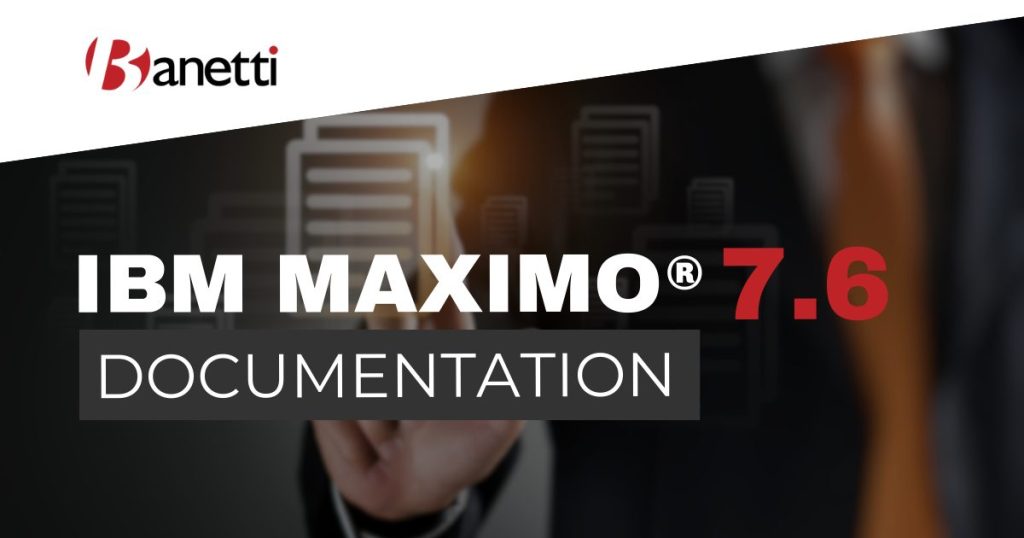5 Min Read
Table of contents

IBM Maximo® has long been regarded as a leader in enterprise asset management (EAM). With the release of version 7.6.1, organizations gain a more powerful platform to manage assets, maintenance, and operations with improved flexibility.
This version refines the user experience, enhances security, and offers the ability to expand deployment options. The document serves as a critical resource for IT teams, asset managers, and administrators to ensure a smooth implementation and ongoing support.
What is IBM Maximo® 7.6.1?

IBM Maximo® 7.6.1 represents a significant upgrade from the previously available 7.6.0 release. It introduces compatibility with modern middleware such as WebSphere 9.0 and Db2 11.5, ensuring continued enterprise support. The system is designed to deliver complete visibility and control over enterprise assets, work orders, inventory, and procurement processes.
The release comes in two core deployment models. The standard edition is designed for single organizations, while the multitenancy edition allows multiple clients or business units to run independently on the same environment. This flexibility extends IBM Maximo®’s reach to managed service providers, large holding companies, and government sectors.
Target industries include utilities, transportation, oil and gas, manufacturing, and facilities management. Each industry benefits from IBM Maximo®’s configurable modules that align with sector-specific needs, ensuring consistent and reliable performance.
IBM Maximo® 7.6.1 Installation Guide

Installing IBM Maximo® 7.6.1 requires proper planning, supported environments, and careful configuration.
System Requirements
To successfully install IBM Maximo® 7.6.1, administrators must prepare environments that meet hardware and software prerequisites. The application supports Windows Server, Linux, and AIX operating systems. Middleware components include IBM Maximo® WebSphere Application Server 9.0 and Db2 11.1 or later. Other supported databases include Oracle and Microsoft SQL Server. Adequate memory allocation and JVM tuning are essential for stable performance.
Installation Steps
The installation process begins by downloading the required files from IBM Maximo® Passport Advantage. All compressed files must be extracted to a single directory before launching the installation manager. On Windows, the process starts with launchpad64.exe, while on Linux and AIX environments, administrators use launchpad.sh.
During setup, IBM Maximo® Installation Manager deploys required packages, including WebSphere, Db2, and Maximo. The Tivoli Process Automation Suite Configuration Tool is then used to configure databases, application servers, and security. Administrators can populate the system with demo data, making it easier to test configurations before moving to production.
Post-Installation Tasks
Once installation is complete, post-implementation checks are necessary. Administrators verify the IBM Maximo® application server has started, confirm database connectivity, ensure JVM parameters are optimized, and check a message for permissions. Troubleshooting common issues such as directory path errors or insufficient permissions is part of this stage. IBM Maximo®’s best practice guides recommend proactive monitoring of memory consumption, database indexing, and scheduled cleanup scripts to maintain system performance.
IBM Maximo® Multitenancy in Version 7.6.1

Multitenancy in IBM Maximo® 7.6.1 allows multiple organizations to operate securely within a single environment. Each tenant operates independently with their own folder name, file name, and configuration.
Overview of Multitenancy
Multitenancy enables multiple organizations to run on a single IBM Maximo® instance while maintaining data separation. Each tenant operates independently, with access to their own configurations, data, and workflows. This architecture is ideal for service providers and enterprises managing multiple subsidiaries or regions.
Key Multitenancy Features
Tenant isolation is the foundation of this model. Each client’s data is securely separated while sharing infrastructure resources. Shared resource management allows efficient use of databases and middleware, while administrative controls simplify oversight. Administrators can manage tenants from a central point while enforcing governance standards across all organizations.
New Features and Enhancements in IBM Maximo® 7.6.1

The 7.6.1 release introduces usability, functionality, and security improvements across the platform.
User Interface Updates
Version 7.6.1 introduces a modernized user interface with a refreshed skin that makes navigation smoother. The responsive design enhances task completion and reduces training time for end users.
Functional Improvements
Work Centers received significant usability upgrades. The Work Supervision and Work Execution Work Centers now feature improved dashboards, while service request creation and classification have been streamlined. Inspection tools also saw enhancements, making it easier for field staff to capture and manage data.
Security Enhancements
Security improvements include a new system property to manage authentication within the IBM Maximo® Integration Framework. This ensures that integrations with external systems comply with enterprise security standards. Role-based access refinements provide administrators with more granular control over user permissions.
Key Modules and Tools in IBM Maximo® 7.6.1

IBM Maximo® 7.6.1 delivers core modules that cover every aspect of asset lifecycle management.
Work Management
The work management module remains central to IBM Maximo®. It enables organizations to create, assign, and track work orders, manage job plans, and implement preventive maintenance schedules. These capabilities ensure assets are maintained efficiently and downtime is minimized.
Asset Management
IBM Maximo®’s asset management tools allow enterprises to define asset hierarchies, manage locations, and monitor conditions. With integrated condition monitoring, organizations can proactively detect issues and schedule corrective maintenance before failures occur.
Inventory and Procurement
The inventory and procurement modules streamline supply chain activities. From tracking spare parts to automating purchase requisitions, these tools ensure that maintenance teams have access to the right resources at the right time. Receiving workflows are also integrated, reducing manual effort and improving accuracy.
Reporting and KPIs
IBM Maximo® 7.6.1 leverages BIRT reporting and configurable dashboards to deliver actionable insights. With the addition of Cognos Analytics integration, organizations can visualize trends, measure KPIs, and link customized reports that support better decision-making.
Documentation Resources for IBM Maximo® 7.6.1

Comprehensive documentation and support resources ensure smooth deployment and long-term use.
Official IBM Documentation
IBM Maximo® provides comprehensive resources in both PDF and HTML formats. These guides cover the new changes, installation, configuration, and troubleshooting details. Navigation tips within the Knowledge Center make it easier for administrators to locate specific procedures.
Download Centers and Fix Packs
Administrators can obtain interim fixes, industry solution packages, and cumulative updates from IBM Maximo®’s download centers. The versioning and compatibility matrices provided by IBM Maximo® ensure that each fix pack aligns with existing installations.
Support and Community Resources
Beyond official documentation, users can leverage IBM Maximo®’s support portal, community forums, and blogs. These resources provide peer-to-peer insights, troubleshooting tips, and best practices from industry experts.
Troubleshooting and Best Practices

Practical fixes and performance tips help organizations maintain a stable Maximo environment.
Common Issues and Fixes
Administrators often encounter configuration errors during initial setup. Common problems include incorrect JVM memory allocation, database connectivity issues, and permission mismatches. IBM Maximo®’s guides provide step-by-step instructions for resolving these issues, ensuring minimal downtime.
Performance Tuning Tips
Performance optimization focuses on JVM memory settings, database indexing, and cleanup scripts. Regular tuning ensures that IBM Maximo® remains responsive even as transaction volumes increase. Following IBM Maximo®’s best practices helps organizations extend the lifecycle of their implementations.
Conclusion
IBM Maximo® 7.6.1 is more than just an incremental update. It is a comprehensive platform designed to modernize enterprise asset management. With enhanced features, robust multitenancy, and extensive documentation support, it equips organizations to manage assets efficiently and securely. By following the official guides and best practices, enterprises can maximize the value of their implementation while preparing for future upgrades to the IBM Maximo® Application Suite.
For businesses looking to get the most out of IBM Maximo®, partnering with an experienced consulting firm can make all the difference. Banetti, a trusted EAM consulting platform, specializes in helping organizations implement IBM Maximo® and optimize it to achieve measurable results. From installation and configuration to performance tuning and long-term strategy, organizations can choose Banetti to unlock the full potential of their asset management investment.
Learn more.


